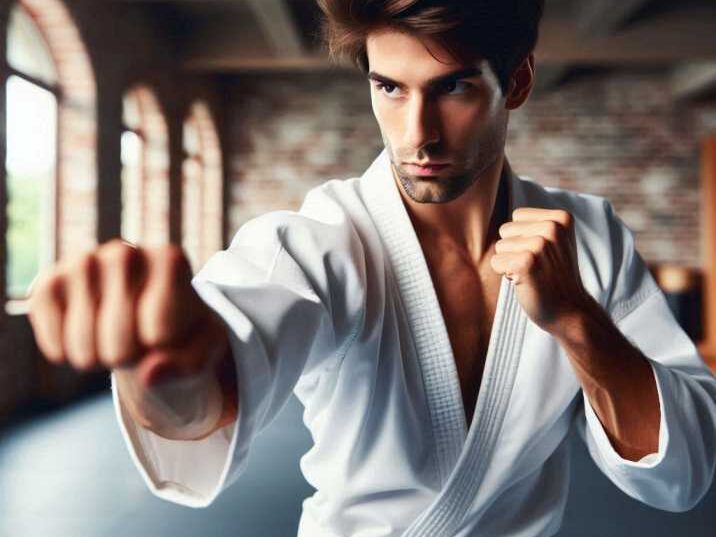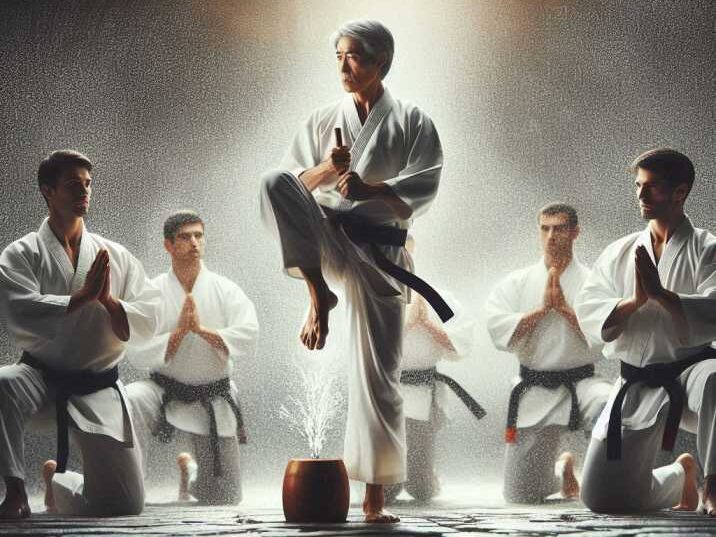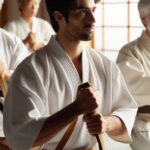Introduction
Table of Contents
Traditional martial arts, like Karate, Taekwondo, and Kung Fu, have been practiced for centuries. They teach students discipline, respect, self-defense, and focus. But in today’s world, with modern forms of fighting like Mixed Martial Arts (MMA), many people ask: Are traditional martial arts still effective? In this article, we will explore the benefits of traditional martial arts and how they are still helpful, even today.
What Are Traditional Martial Arts?
Traditional martial arts are ancient fighting systems that have been handed down over many generations, originating from different cultures and regions around the world. These martial arts are not just about physical combat; they also focus on personal development, discipline, and respect. Below is an explanation of some of the most well-known traditional martial arts:
1. Karate
Karate, which originated from Okinawa, Japan, is a martial art focused on striking techniques. These include punches, kicks, knee strikes, and elbow strikes. Karate practitioners also learn blocking techniques to defend themselves against attacks. Over time, it has become one of the most popular martial arts worldwide.

- Key Elements: Striking, blocking, and self-defense.
- Goal: To disable or subdue an opponent through well-timed and precise strikes.
- Personal Development: Karate emphasizes self-discipline, focus, and respect for others, making it a valuable tool for character building.
2. Taekwondo
Taekwondo is a Korean martial art that is best known for its high, powerful kicks and fast movements. It emphasizes speed, agility, and flexibility, and practitioners often perform spinning and jumping kicks. It was developed during the 1940s and 1950s in South Korea, influenced by older martial arts such as Karate and indigenous Korean martial traditions.
- Key Elements: High kicks, fast-paced footwork, and dynamic movements.
- Goal: To strike opponents at a distance, using kicks to attack vulnerable areas such as the head and torso.
- Personal Development: Taekwondo places a strong emphasis on perseverance, self-control, and indomitable spirit, which translates into everyday life and helps build confidence and self-esteem.
3. Kung Fu
Kung Fu is an umbrella term for a variety of Chinese martial arts, each with its unique techniques and philosophies. Kung Fu is often focused on both mental and physical development. There are many different styles of Kung Fu, such as Shaolin Kung Fu, which emphasizes fluid movements and strength, and Wing Chun, which uses close-range strikes.
- Key Elements: A wide variety of strikes, blocks, joint locks, and even grappling techniques, depending on the style.
- Goal: To harmonize the body and mind, focusing on balance, flexibility, and endurance.
- Personal Development: Kung Fu teaches patience, inner peace, and discipline, as well as improving physical health through vigorous training.
4. Judo
Judo, developed in Japan in the late 19th century, focuses on throws, pins, and joint locks rather than strikes. Its name means “the gentle way” because Judo practitioners use their opponent’s strength and momentum against them, allowing smaller individuals to defeat larger opponents. Judo was founded by Jigoro Kano, who wanted to create a martial art that promoted physical and mental growth.
Personal Development: Judo teaches mental resilience, calmness under pressure, and self-discipline, making it a martial art that enhances both physical and emotional strength.
Key Elements: Grappling, throwing, pinning, and joint-locking techniques.
Goal: To subdue or control an opponent without causing injury through powerful throws or submission techniques.
Benefits of Traditional Martial Arts
1. Discipline and Self-Control
One of the main reasons traditional martial arts are still effective today is because they teach discipline and self-control. Students must follow rules and respect their instructors and fellow students. Learning these values can help in school, work, and everyday life.
2. Physical Fitness
Martial arts are a great way to stay fit. They require strength, agility, balance, and endurance. Practicing martial arts helps develop strong muscles, better flexibility, and improved stamina. In fact, many athletes use martial arts training to improve their fitness.
3. Focus and Concentration
Training requires concentration and discipline, which can translate to improved focus in school and other activities. Martial artists must focus on their movements, techniques, and breathing. This increased concentration can improve academic performance and make kids more attentive.
4. Self-Defense
While modern martial arts like MMA are known for their combat efficiency, traditional martial arts also teach practical self-defense skills. Techniques like blocking, striking, and evading can be helpful in dangerous situations. Many martial arts schools emphasize the importance of using self-defense only in serious situations and not for aggressive purposes.
5. Mental Strength
Traditional martial arts not only train the body but also the mind. Practicing these arts can build mental toughness, teaching students how to stay calm under pressure, deal with challenges, and keep a positive attitude.
6. Respect and Humility
Respect is at the core of all traditional martial arts. Students are taught to respect their instructors, peers, and themselves. Humility is emphasized, teaching students not to boast about their abilities or use them to hurt others.
7. Stress Relief
In today’s fast-paced world, many people deal with stress. Traditional martial arts help reduce stress by promoting deep breathing, meditation, and physical movement. The focus required in martial arts can help students forget their worries and enjoy the moment.
Traditional Martial Arts vs. Modern Combat Sports
Some people wonder if traditional martial arts are outdated, especially when compared to modern combat sports like MMA, which are often viewed as more practical for real-world situations. However, traditional martial arts still hold their value:
- Traditional martial arts focus on personal growth, while modern combat sports prioritize winning fights.
- They promote long-term development, teaching not just fighting techniques but life lessons.
- Modern combat sports tend to emphasize competition, while traditional martial arts focus on self-improvement and discipline.
Both have their place, and students can benefit from combining elements of both.
How Traditional Martial Arts Improve Focus and Discipline
The Role of Routine
In traditional martial arts, students follow a strict routine. They practice techniques over and over, which improves muscle memory and concentration. This kind of repetitive training can help students become more disciplined in their daily lives. Learning how to stick to a routine can improve study habits and make students more organized.
Mental Training
Many traditional martial arts include a mental aspect, such as meditation or mindfulness. These practices help students clear their minds, focus on the present moment, and build better concentration skills. This focus translates well to tasks like homework, tests, or projects at school.

Are Traditional Martial Arts Still Useful in Self-Defense?
Yes! Traditional martial arts can still be very useful in self-defense situations. Techniques such as blocking punches, disarming an attacker, or using joint locks can be extremely effective when facing a threat. These arts teach students how to react calmly and efficiently in a fight. However, they also stress that self-defense should only be used when necessary.
Table of Information: Traditional Martial Arts vs. Modern Combat Sports
| Aspect | Traditional Martial Arts | Modern Combat Sports |
|---|---|---|
| Focus | Discipline and Self-Improvement | Winning Fights |
| Main Benefit | Mental and Physical Development | Practical Fighting Skills |
| Training Style | Structured, Form-Based | Free-Form, Sparring |
| Respect and Humility | Central to Training | Less Emphasis |
| Self-Defense | Practical but Less Combat-Focused | Highly Combat-Oriented |
Conclusion
In conclusion, traditional martial arts are not just about fighting; they build character, promote physical fitness, and teach important life skills like focus, discipline, and respect. They continue to be effective and valuable in the modern world, making them a great choice for anyone looking to grow both physically and mentally.
FAQs
1. Can traditional martial arts help in a real fight?
Yes, traditional martial arts teach valuable self-defense techniques like blocking, striking, and evading, which can be useful in real-life situations.
2. Are traditional martial arts only for kids?
No, traditional martial arts are practiced by people of all ages, including adults who want to improve their fitness and mental strength.
3. How long does it take to become good at traditional martial arts?
It depends on the martial art and the individual, but most people start seeing improvements after several months of consistent training.
4. Can martial arts help with focus and concentration?
Yes, martial arts require a lot of concentration, and this can help improve focus in other areas like school or work.
5. What is the difference between traditional martial arts and modern martial arts?
Traditional martial arts focus more on personal development and discipline, while modern martial arts like MMA emphasize fighting and competition.


